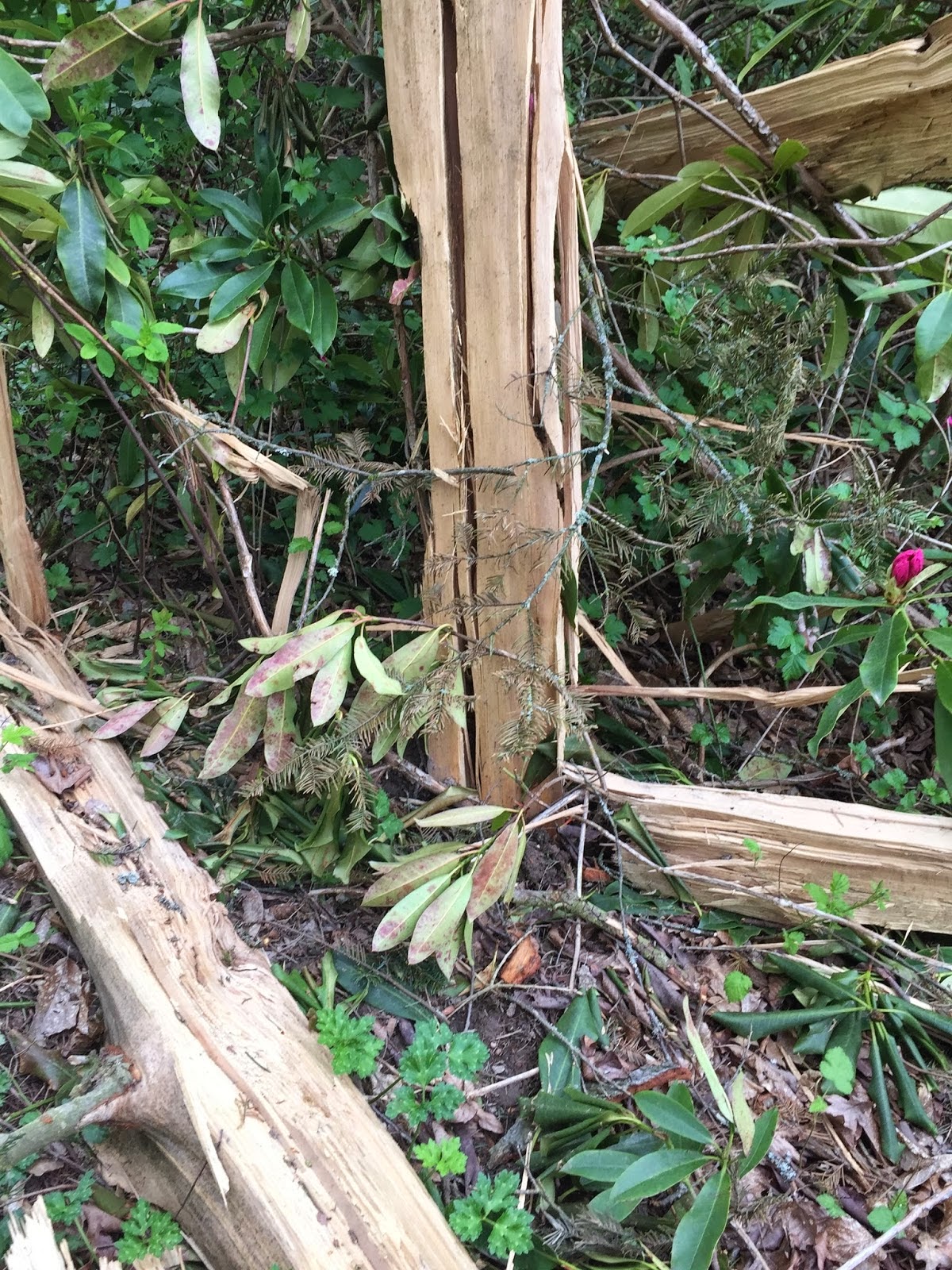If you needed another reason to avoid standing under a tree during a lightning storm, here is another: the tree might explode and shred everything in its environment.
Such an event happened in the
A view from the air (courtesy of KOMO TV) and on the ground right after it happened (courtesy of the UW arboretum) are shown below. The original tree was over 100 ft tall.
Why did it explode? When lightning hits the tree, it ran down the moist inner sapwood, since that portion of the tree conducts current better. The huge current produced rapid heating and the water turned to steam , which in turn produced huge pressures that caused explosive expansion.
Can you imagine if you were standing near that tree? You would have been torn apart or speared by flying debris. Of course, standing under a tree during a thunderstorm is a bad idea for other reasons, such as getting electrocuted by the lightning current. When I was a student at Cornell, a bunch of student were sheltering under a tree during a storm. Lightning hit. Several were seriously injured with some never recovering.
Can you imagine if you were standing near that tree? You would have been torn apart or speared by flying debris. Of course, standing under a tree during a thunderstorm is a bad idea for other reasons, such as getting electrocuted by the lightning current. When I was a student at Cornell, a bunch of student were sheltering under a tree during a storm. Lightning hit. Several were seriously injured with some never recovering.












.png)

